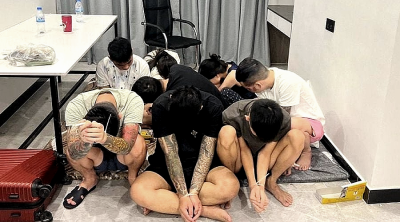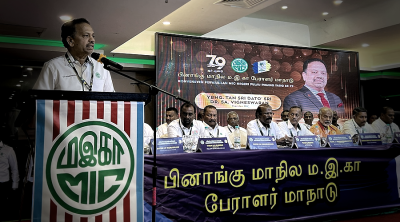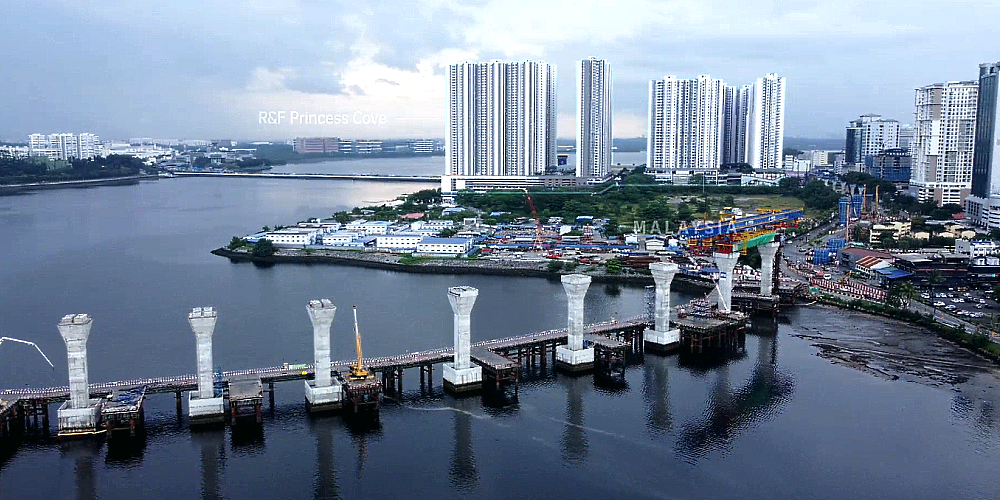
The Johor Bahru-Singapore Rapid Transit System (RTS) Link is a light rail stretching 4 km that will play a big role in connecting both places when it is ready by end-2026. The project is estimated to cost RM10 billion.
Touted as a game changer by both the Singapore and Malaysia governments, the rail shuttle service is expected to ease traffic congestion on the Causeway, an issue that has frustrated hundreds of thousands of daily commuters and day-trippers for years.
The project, first announced in 2010, faced multiple delays before the first soil was turned in 2020.
At the 10th Singapore-Malaysia Leaders’ Retreat at the Istana in October, both Singapore Prime Minister Lee Hsien Loong and Malaysia Prime Minister Anwar Ibrahim expressed confidence that the project is on track for completion by the end of 2026.
A ceremony will be held in early 2024 to mark an important milestone – the completion of the drop-in span that will connect the RTS Link’s viaduct across the Strait of Johor.
The RTS route
The four-carriage RTS Link train will travel between the underground Woodlands North station in Singapore and the above-ground terminus at Bukit Chagar, which is next to the JB checkpoint.
Travelling at about 80 kph, it will complete the journey in just six minutes. Train frequency is expected to be 3.6 minutes during peak hours.
On the Singapore side, passengers will be able to transfer from the RTS Link to the Thomson-East Coast Line (TEL) via an underground link, without needing to exit the station.
To expedite arrivals, a single-point clearance immigration system has been proposed.
According to Singapore’s Land Transport Authority, there will be joint Customs, Immigration and Quarantine facilities at both RTS stations.
Passengers will need to clear both Singapore and Malaysia immigrations only at the point of departure.
Money money money
Feeling confident about the RTS Link construction progress, many Malaysians working in Singapore, as well as Singaporeans looking for investment or holiday homes, are buying high-rise residences within a short walk or drive away from the light rail station in Bukit Chagar.
Xu Jie, deputy general manager for Chinese developer R&F, said his company saw five times more transactions for Princess Cove’s serviced apartments between April and September, compared with the same period in 2022.
Singaporeans make up 40 per cent of the buyers. They are the biggest group, followed by those from Malaysia, China and Taiwan.
MBW City, a mixed development project that will launch only in 2024, had interested buyers registering for priority access to all its 540 units. Another 1,000 people are now on the wait list.
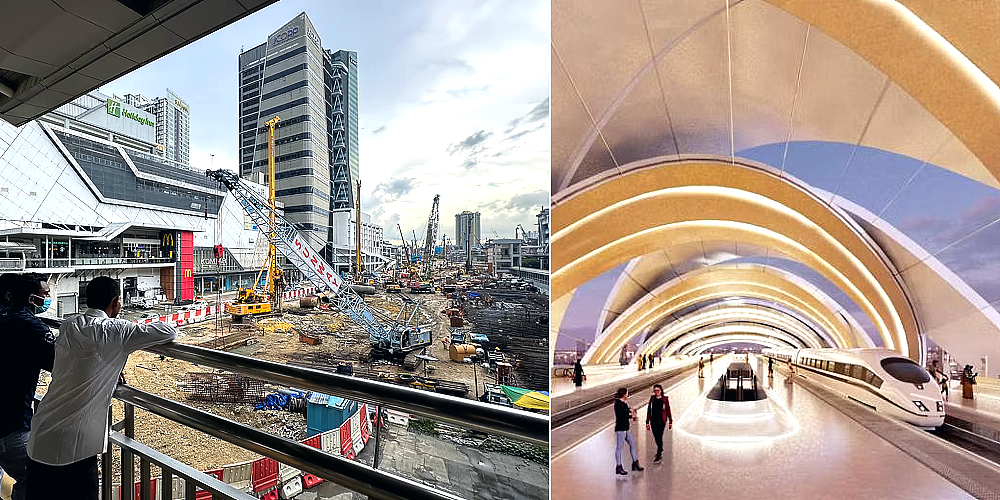
Eat, shop, play
The RTS Link will likely bring even more footfall to popular attractions near the JB checkpoint, such as Jalan Tan Hiok Nee, a heritage street featuring boutique cafes and vintage clothing stores.
On weekends, the street is always bustling with visitors busy taking photos “for the Gram” at the iconic Red House, or queuing for banana cakes baked in traditional charcoal ovens at a famed bakery.
A street away, along Jalan Dhoby, state government agency Tourism Johor has opened its first official souvenir shop on Nov. 28, ready to entice even more tourists to buy collections of batik fabric from Kulai and string instruments called gambus from Batu Pahat.
The RTS Link will likely further boost businesses in the area, especially those selling cheap and good eats.
Phang YS, a watch dealer and optician based in JB, said, “Those who will benefit most directly are restaurants and eateries.
“When people come from Singapore, they want to eat here as it’s cheaper most of the time.”
Phang is less optimistic about his chances of getting a bigger slice of the growing pie, since “not everyone will be looking for things like clocks or watches”.
Business costs will also go up if landlords demand higher rent from retailers in prime locations near the RTS Link station, he added.
History and heritage
To some Johor residents, the RTS Link will bring about benefits beyond easier commutes and economic growth.
Sin Chew Daily veteran journalist and author Su King Siang said he hopes more tourists who arrive at Bukit Chagar will learn about its history as a home to early migrant workers, as well as some of its prominent residents.
“Not many people know the family of Robert Kuok used to live here,” he told The Straits Times at the Chinese Heritage Museum in Jalan Ibrahim.
The museum is the former home of Robert Kuok, Malaysia’s richest man who is widely known as Asia’s “sugar king”. His family used to run a sundry shop on the building’s ground floor.
The four-storey pre-war shophouse features artefacts from the days when JB, then called Iskandar Petrie, was one of the world’s largest growers of gambier.
Johor resident and historian Bak Jia How said both Malaysia and Singapore governments have exercised considerable political will to ensure the construction of RTS Link is back on track.
Bak recalled fondly how he used to travel to Woodlands with his parents every weekend in the late 1980s to buy cheap and fresh fruit.
That was a time when people could drive across the Causeway without worrying about being stuck in traffic or queues for hours at immigration, he said.
While the RTS Link is widely seen as the answer to the congestion issue, Bak said it is better to be cautiously optimistic.
“The current assumption is that once the RTS is here, traffic (across the Causeway) will be free-flowing.
“What if there are many faults and delays? What if there are not enough trips?” he said, adding that the project will truly be a game-changer only with the mutual understanding and close cooperation of both governments.
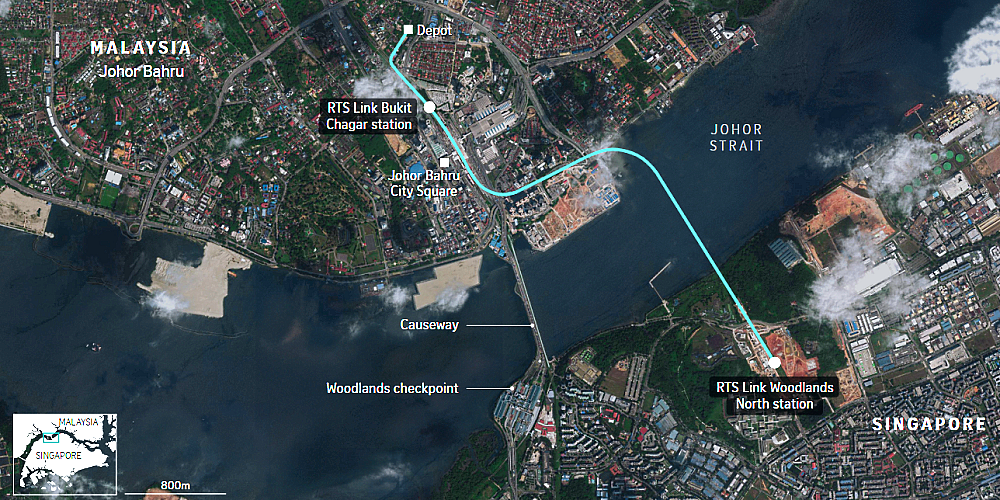
ADVERTISEMENT
ADVERTISEMENT







